Spanish-Philippine Copper Coinage (1700-1835)
With the establishment of the Manila-Acapulco Galleon Trade, a steady influx of gold and silver coins flowed through the Philippines. Among the most prominent were the silver reales, including the Spanish Dollar (Pillar Dollar), commonly known as the Pieces of Eight, and the gold escudos, both of which became the primary currency for trade.
However, much like in Mexico, the Philippines faced challenges in conducting smaller transactions due to the lack of fractional coins. To address this issue, Spanish authorities authorized the minting of copper coins. These coins were crudely struck, possibly by Chinese contractors assigned to the task.
Copper Coinage and the Barilla
These copper coins were structured as follows:
8 Octavos = 4 Quartos = 1 Real
8 Reales = 1 Peso
Minting of these coins began around 1728, with the first coin struck known as the Barilla.
Barilla
The 1728 Barilla has been the subject of controversy, with some believing it may have been a mere token or even a counterfeit. The obverse of the coin features the coat of arms of the City of Manila, inscribed with "Barilla, Año de 1728," while the reverse is blank.
The term Barilla may have originated from the Spanish word "calderilla," meaning small change. Additionally, the Filipino word "barya," referring to fractional currency, is believed to have been derived from Barilla.
The most commonly found Barilla coins today are those dated 1766, measuring 18mm in diameter and featuring a design that appears to split the coat of arms of Manila between the obverse and reverse.
The obverse depicts a castle inside a circle, topped with a crown, and bears the inscription "Ciudad de Manila" (City of Manila). The reverse features a sea lion holding a sword on a shield, also topped with a crown. Following the Barilla, the Octavo and Quarto denominations were introduced.
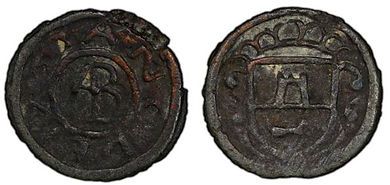
Image Source: PCGS, 1733 Barilla Basso-2

Image Source: PCGS, 1766 Barilla
Octavo
The Octavo, similar to the Barilla, measures 18mm in diameter. With the introduction of the Octavo, the obverse now featured the Spanish coat of arms, along with an inscription bearing the name of the reigning monarch at the time. The reverse depicted a sea lion wielding a sword, guarding two globes—symbolizing Spanish dominion over its territories.
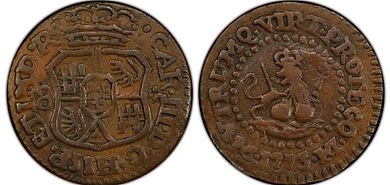
Image Source: PCGS, 1773 Octavo
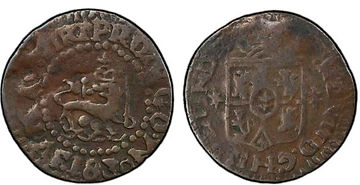
Image Source: PCGS, 1830 Octavo
Quarto
The Quarto shared the same design as the Octavo, but it was slightly larger, measuring 22mm in diameter. For both the Octavo and Quarto, beginning in 1798, the Spanish coat of arms on the obverse was modified, with stars flanking the shield, adding a distinctive design element to later issues.
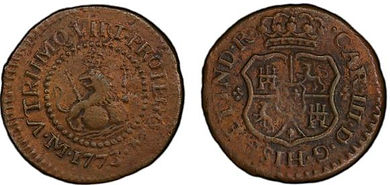
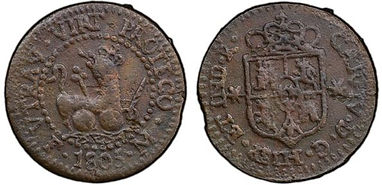
Image Source: PCGS, 1773 Quarto
Click Image to Enlarge
Image Source: PCGS, 1805 Quarto
The Silver Quartillo
The Quartillo was not minted locally in the Philippines but was instead produced at the Mexico Mint. Made of silver, it had a value of 1/4 Real. Sources suggest that 6,000 pesos worth of Quartillos were ordered by the local Spanish authorities to facilitate smaller transactions.
This coin featured a simple design, measuring 11.5mm in diameter:
The obverse depicted a lion.
The reverse featured a castle.
Notably, the Quartillo lacked any inscriptions, mint marks, or date, making it distinct from other colonial-era currency.
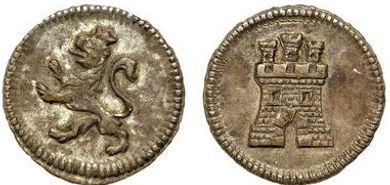
These locally struck copper coins, as well as the Quartillo, are quite rare today. Even in poor condition, the few that remain on the market are highly sought after by collectors and often command a premium.
Sources & Further Reading:
1. Book, Aldo P. Basso, Coins, Medals and Tokens of the Philippines
2. Standard Catalog of World Coins (1701–1800, 7th Edition)
3. Yaman: History and Heritage in Philippine Money
5. pcgs.com
Published Date: 2/24/2025

